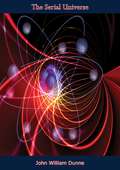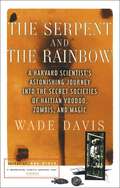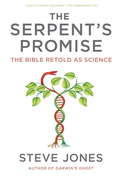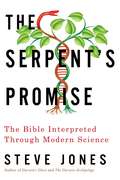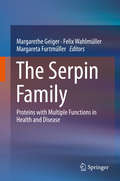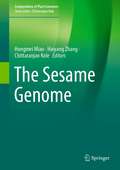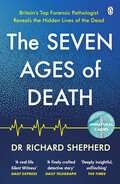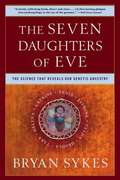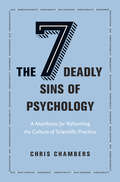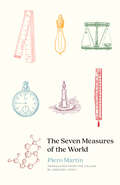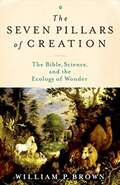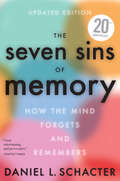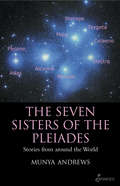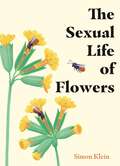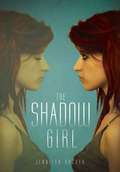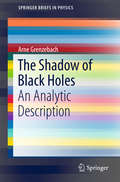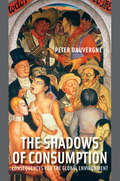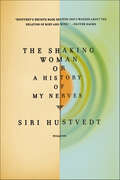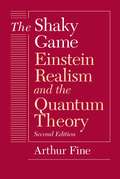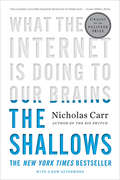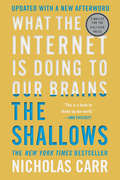- Table View
- List View
The Serial Universe
by John William DunneIn this book I have tried to give the reader a bird's-eye view of the territory covered by the theory called 'Serialism'. Some of the chapters, greatly condensed, have been delivered in lecture form to the Royal College of Science (Mathematical Society and Physical Society). But the main outline of the subject is, I believe, clear enough to be appreciated by those who have no special technical knowledge. Where all is fog, a blind man with a stick is not entirely at a disadvantage. In my case, Fortune presented me with a stick; and I have used this with considerable temerity. Certainly, it has led me somewhere possibly only into the roadway, where I shall be run over by a motor-bus full of scientific critics. But, if I have crossed safely to the other side, then I should like to express my gratitude to Mr J. A. Lauwerys of the University of London, whose continuous encouragement has been the chief factor which has kept me tapping along.
The Serotonin Power Diet
by Judith J. Wurtman Nina FrusztajerFood plan with various stages to it. Its intent is to keep serotonin levels in the body high. Contains recipes.
The Serpent and the Rainbow: A Harvard Scientist's Astonishing Journey into the Secret Society of Haitian Voodoo Zombis and Magic
by Wade DavisA scientific investigation and personal adventure story about zombis and the voudoun culture of Haiti by a Harvard scientist.In April 1982, ethnobotanist Wade Davis arrived in Haiti to investigate two documented cases of zombis—people who had reappeared in Haitian society years after they had been officially declared dead and had been buried. Drawn into a netherworld of rituals and celebrations, Davis penetrated the vodoun mystique deeply enough to place zombification in its proper context within vodoun culture. In the course of his investigation, Davis came to realize that the story of vodoun is the history of Haiti—from the African origins of its people to the successful Haitian independence movement, down to the present day, where vodoun culture is, in effect, the government of Haiti’s countryside. The Serpent and the Rainbow combines anthropological investigation with a remarkable personal adventure to illuminate and finally explain a phenomenon that has long fascinated Americans.
The Serpent's Promise
by Steve JonesA unique contribution to the God/religion debate: a scientific take on the Bible that doesn't take sides. Many of the subjects studied by physicists or by biologists are found in the texts of the world's religions: the origins of the universe, of life and of mankind; fate, sex, age and death; and the prospects of eternal life or of fiery doom. The Bible is a handbook for understanding Nature and, in its own way, it succeeds. As a factual account, of course, it is out of date, but many of its statements can be rephrased in modern terms. Distinguished geneticist Steve Jones has done that: written a rivetingly accessible work on recent advances in our understanding of ourselves, using the Bible as a framework. His narrative is structured around the Good Book's grand themes, from Genesis to Revelations, and weaves a series of unexpected facts into a coherent whole. The struggle of rationalism with its opposite has, after decades of torpor, returned to centre stage. Polemics against and in favour of religion and atheism fill the shelves. Instead of adding to that pile, Steve Jones stands back and take a fresh look at that issue in a volume that is not an attack or a defence but which explores scriptural motifs--Creation, the Garden of Eden, original sin, the Exodus, virgin birth, the Resurrection, and the Last Judgment--using the methods and results of the latest scientific research. It is a remarkably quick jump, shows Professor Jones, from Adam to astrophysics. Although some of the questions raised are beyond the capabilities of science, at least a scientist can ask them in a new way. Steve Jones shows there is a better route to understanding the universe than through doctrine.
The Serpent's Promise: The Bible Interpreted Through Modern Science
by Steve JonesFrom acclaimed geneticist Steve Jones, the story of the Bible as told through the lens of modern science. In The Serpent's Promise, Steve Jones retells many of the Biblical tales in the light of modern science. Are we all descended from a real-life Adam and Eve? Are some--or all--of us marked with the molecular equivalent of original sin, and if so what can we do about it? Was the Bible's great flood a memory of the end of the Ice Age? And what can science tell us of the mystical experiences reported by the faithful, or of the origin of faith itself? Some people deny the power of religious belief, others the findings of science. In this groundbreaking work from one of our great science writers, Steve Jones explores how these mysteries often overlap. He steps aside from the noisy debate between believers and non-believers to show how the questions that preoccupy us today are those of biblical times--and that science offers many of the answers. At once brilliantly erudite and highly readable, The Serpent's Promise is a witty and thoughtful account of the greatest scientific story ever told.
The Serpin Family
by Margarethe Geiger Felix Wahlmüller Margareta FurtmüllerThe book provides an comprehensive overview on biology, genetics and cellular functions of serpins (serine protease inhibitors) in health and disease. With over 1000 members serpins are the most diverse family of protease inhibitors. Latest groundbreaking research findings are presented and broaden the understanding on inhibitory and non-inhibitory serpins, not only in mammalian organisms but also in insects, worms, plants and viruses.
The Sesame Genome (Compendium of Plant Genomes)
by Chittaranjan Kole Hongmei Miao Haiyang ZhangThis book is the first comprehensive compilation of deliberations on whole genome sequencing of sesame including genome assembly, annotation, structure and synteny analysis, and sequencing of its chloroplast genome and also its wild species. It presents narratives on classical genetics and breeding, tissue culture and genetic transformation, molecular mapping and breeding. Other chapters describe the beneficial components in sesame protein and oil, botanical depictions and cytological features. Prospects of designed breeding in the post-genomics era including gene discovery have also been enumerated.Altogether, the book contains 19 chapters authored by globally reputed experts on the relevant field in this crop. This book is useful to the students, teachers, and scientists in the academia and relevant private companies interested in classical and molecular genetics, biotechnology, breeding, biochemistry, traditional and molecular breeding, and structural and evolutionary genomics. The work is also useful to seed and oil industries.
The Seven Ages of Death: ‘Every chapter is like a detective story’ Telegraph
by Dr Richard ShepherdThe heart-wrenchingly honest new book about life and death from forensic pathologist and bestselling author of UNNATURAL CAUSES, Dr Richard ShepherdA TIMES AND SUNDAY TIMES BOOK OF THE YEAR'Deeply insightful. Unflinching' THE TIMES'A finely-crafted detective story' DAILY TELEGRAPH'Enlightening, strangely uplifting' DAILY MAIL'Fascinating' DAILY EXPRESS_________Dr Richard Shepherd, a medical detective and Britain's top forensic pathologist, shares twenty-four of his most intriguing, enlightening and never-before-told cases.These autopsies, spanning the seven ages of human existence, uncover the secrets not only of how a person died, but also of how they lived.From old to young, murder to misadventure, and illness to accidental death, each body has something to reveal - about its owner's life story, how we age, justice, society, the certainty of death.And, above all, the wonderful marvel of life itself._________Praise for Dr Richard Shepherd'Gripping, grimly fascinating, and I suspect I'll read it at least twice' Evening Standard'A deeply mesmerising memoir of forensic pathology. Human and fascinating' Nigella Lawson'An absolutely brilliant book. I really recommend it, I don't often say that but it's fascinating' Jeremy Vine, BBC Radio 2'Puts the reader at his elbow as he wields the scalpel' Guardian'Fascinating, gruesome yet engrossing' Richard and Judy, Daily Express'Fascinating, insightful, candid, compassionate' Observer
The Seven Daughters of Eve
by Bryan SykesThe identification of a snippet of DNA in mitochondria allows scientists to trace our maternal genetic makeup back to prehistoric times.
The Seven Deadly Sins of Psychology: A Manifesto for Reforming the Culture of Scientific Practice
by Chris ChambersWhy psychology is in peril as a scientific discipline—and how to save itPsychological science has made extraordinary discoveries about the human mind, but can we trust everything its practitioners are telling us? In recent years, it has become increasingly apparent that a lot of research in psychology is based on weak evidence, questionable practices, and sometimes even fraud. The Seven Deadly Sins of Psychology diagnoses the ills besetting the discipline today and proposes sensible, practical solutions to ensure that it remains a legitimate and reliable science in the years ahead.In this unflinchingly candid manifesto, Chris Chambers draws on his own experiences as a working scientist to reveal a dark side to psychology that few of us ever see. Using the seven deadly sins as a metaphor, he shows how practitioners are vulnerable to powerful biases that undercut the scientific method, how they routinely torture data until it produces outcomes that can be published in prestigious journals, and how studies are much less reliable than advertised. He reveals how a culture of secrecy denies the public and other researchers access to the results of psychology experiments, how fraudulent academics can operate with impunity, and how an obsession with bean counting creates perverse incentives for academics. Left unchecked, these problems threaten the very future of psychology as a science—but help is here.Outlining a core set of best practices that can be applied across the sciences, Chambers demonstrates how all these sins can be corrected by embracing open science, an emerging philosophy that seeks to make research and its outcomes as transparent as possible.
The Seven Deadly Sins of Psychology: A Manifesto for Reforming the Culture of Scientific Practice
by Chris ChambersWhy psychology is in peril as a scientific discipline—and how to save itPsychological science has made extraordinary discoveries about the human mind, but can we trust everything its practitioners are telling us? In recent years, it has become increasingly apparent that a lot of research in psychology is based on weak evidence, questionable practices, and sometimes even fraud. The Seven Deadly Sins of Psychology diagnoses the ills besetting the discipline today and proposes sensible, practical solutions to ensure that it remains a legitimate and reliable science in the years ahead. In this unflinchingly candid manifesto, Chris Chambers shows how practitioners are vulnerable to powerful biases that undercut the scientific method, how they routinely torture data until it produces outcomes that can be published in prestigious journals, and how studies are much less reliable than advertised. Left unchecked, these and other problems threaten the very future of psychology as a science—but help is here.
The Seven Measures of the World
by Piero MartinThe fascinating stories behind the essential seven units of measurement that allow us to understand the physical world “Entertaining popular science and a literate tale of why things are as they are.”—Kirkus Reviews From the beginning of history, measurement has been interwoven into the human experience, shaping our understanding of nature, personal relationships, and the supernatural. We measure the world to know our past, comprehend the present, and plan the future. Renowned physicist Piero Martin explores how scientific knowledge is built around seven key pillars of measurement: the meter for length; the second for time; the kilogram for mass; the kelvin for temperature; the ampere for electricity; the mole for quantity of substance; and the candela for luminous intensity. Martin examines the history and function of these units and illustrates their applications in rich vignettes on a range of topics—from quarks to black holes, from a glass of wine to space exploration. He delves into not only the all-important numbers but also anecdotes that underline each unit’s special quality. At the same time, he explains how each unit contributes to important aspects of science, from classical physics to quantum mechanics, from relativity to chemistry, from cosmology to elementary particle physics, and from medicine to modern technology. Martin eloquently shows how the entire universe can be measured and understood using just seven units.
The Seven Pillars of Creation: The Bible, Science, and the Ecology of Wonder
by William P. BrownIn their highly selective and literal reading of Scripture, creationists champion a rigidly reductionistic view of creation in their fight against "soulless scientism." Conversely, many scientists find faith in God to be a dangerous impediment in the empirical quest for knowledge. As a result of this ongoing debate, many people of faith feel forced to choose between evolution and the Bible's story of creation. <p><p> But, as William Brown asks, which biblical creation story are we talking about? Brown shows that, through a close reading of biblical texts, no fewer than seven different biblical perspectives on creation can be identified. By examining these perspectives, Brown illuminates both connections and conflicts between the ancient creation traditions and the natural sciences, arguing for a new way of reading the Bible in light of current scientific knowledge and with consideration of the needs of the environment. <p><P>In Brown's argument, both scientific inquiry and theological reflection are driven by a sense of wonder, which, in his words, "unites the scientist and the psalmist." Brown's own wonder at the beauty and complexity of the created world is evident throughout this intelligent, well-written, and inspirational book.
The Seven Sins of Memory: How the Mind Forgets and Remembers
by Daniel L. SchacterA New York Times Notable Book: A psychologist&’s &“gripping and thought-provoking&” look at how and why our brains sometimes fail us (Steven Pinker, author of How the Mind Works). In this intriguing study, Harvard psychologist Daniel L. Schacter explores the memory miscues that occur in everyday life, placing them into seven categories: absent-mindedness, transience, blocking, misattribution, suggestibility, bias, and persistence. Illustrating these concepts with vivid examples—case studies, literary excerpts, experimental evidence, and accounts of highly visible news events such as the O. J. Simpson verdict, Bill Clinton&’s grand jury testimony, and the search for the Oklahoma City bomber—he also delves into striking new scientific research, giving us a glimpse of the fascinating neurology of memory and offering &“insight into common malfunctions of the mind&” (USA Today). &“Though memory failure can amount to little more than a mild annoyance, the consequences of misattribution in eyewitness testimony can be devastating, as can the consequences of suggestibility among pre-school children and among adults with &‘false memory syndrome&’ . . . Drawing upon recent neuroimaging research that allows a glimpse of the brain as it learns and remembers, Schacter guides his readers on a fascinating journey of the human mind.&” —Library Journal &“Clear, entertaining and provocative . . . Encourages a new appreciation of the complexity and fragility of memory.&” —The Seattle Times &“Should be required reading for police, lawyers, psychologists, and anyone else who wants to understand how memory can go terribly wrong.&” —The Atlanta Journal-Constitution &“A fascinating journey through paths of memory, its open avenues and blind alleys . . . Lucid, engaging, and enjoyable.&” —Jerome Groopman, MD &“Compelling in its science and its probing examination of everyday life, The Seven Sins of Memory is also a delightful book, lively and clear.&” —Chicago Tribune Winner of the William James Book Award
The Seven Sisters of Pleiades: Stories from Around the World
by Munya AndrewsThe legends of the Seven Sisters of the Pleiades that poets, priests, prophets, shamans, storytellers, artists, singers, and historians have told throughout time are retold in this compilation of the stories that have found their inspiration in nine beautiful stars clustered together in the night sky. While particular attention in this cross-cultural study is paid to the influence of the Pleiades cluster on the living traditions of indigenous people in North America, Australia, Japan, and the Pacific, much ancient mythology passed down through written and visual sources from ancient Egypt, India, Greece, and South America is also explored. Appearances of the myths in the modern world are also mentioned, including American presidential elections, Halloween, Atlantis, the Titanic, and Subaru automobiles. Serious astronomical research complements the variety of mythological explanations for the stars' existence by providing the modern world's scientific understanding of them.
The Sexual Evolution: How 500 Million Years of Sex, Gender, and Mating Shape Modern Relationships
by Nathan H. Lents“Enthralling . . . Lents gleefully tears down cis, hetero, and monogamous norms, outlining surprising case studies that give the lie to restrictive conceptions of gender and sex. The result is an indispensable glimpse into the queerness of animals.” — Publishers Weekly (starred review)Evolutionary biologist Nathan H. Lents knows what makes humans unique—and it’s most definitely not our sexual diversity. A professor at John Jay College, Lents has spent his career studying what makes us, well, us, and contrary to what the culture warriors want people to believe—diverse sexual behavior is not a new development, or even a human one. It didn’t just emerge from a progressive culture; it’s the product of billions of years of evolutionary experimentation throughout the animal kingdom. It’s not a modern story, a Florida story, or even a human story. It’s a biological story.In The Sexual Evolution, Lents takes readers on a journey through the animal world, from insects to apes, revealing what the incredible array of sexual diversity can teach us about our own diverse beauty. Nature, it turns out, has made a lot of space for diverse genders and sexual behaviors. And why? Because when it comes to evolution—diversity wins. This is not just a political or social message, instead it’s rooted in science and cultivated from understanding the full breadth of sexuality that exists throughout the world.With shades of both Frans de Waal and Esther Perel, Lents’s storytelling is as fascinating as it is topical, offering eye-opening stories about the diversity of animal life, while relating it to our own sexual journey as a species. At once a forceful rebuttal to bigotry and a captivating dive into the secret sex lives of animals, The Sexual Evolution is the rare book of pop science that leans into the controversy. Sex, the reactionaries say, should only be for procreation between a man and a woman, anything else goes against nature. Well, nature would like a word with them.
The Sexual Life of Flowers
by Simon Klein'A fascinating treasure trove for plant lovers and gardeners alike.' - Frances TophillOften beautiful and sometimes strange, flowering plants have evolved to become masters of seduction.We are surrounded by extraordinary partnerships between plants and the birds, bees and other insects that pollinate them. In The Sexual Life of Flowers, botanist Simon Klein leads a beguiling and fascinating tour of the courtship between fifty flowers and the pollinators vital to their survival.From the siren scent of honeysuckle to the radiating warmth of the sunflower or the ultraviolet signal of the red poppy; tales of botanical charm, deception and intrigue are played out amid an annual explosion of activity in gardens, meadows and woodlands. Lavishly illustrated in full colour, this is a beautiful collection for gardeners and anyone with an interest in flowers.
The Sexual Life of Flowers
by Simon Klein'A fascinating treasure trove for plant lovers and gardeners alike.' - Frances TophillOften beautiful and sometimes strange, flowering plants have evolved to become masters of seduction.We are surrounded by extraordinary partnerships between plants and the birds, bees and other insects that pollinate them. In The Sexual Life of Flowers, botanist Simon Klein leads a beguiling and fascinating tour of the courtship between fifty flowers and the pollinators vital to their survival.From the siren scent of honeysuckle to the radiating warmth of the sunflower or the ultraviolet signal of the red poppy; tales of botanical charm, deception and intrigue are played out amid an annual explosion of activity in gardens, meadows and woodlands. Lavishly illustrated in full colour, this is a beautiful collection for gardeners and anyone with an interest in flowers.
The Shadow Girl
by Jennifer ArcherSometimes I forget for an hour or two that she's with me. Sometimes I convince myself that she was only a dream. Or that I'm crazy. For as long as Lily Winston can remember, she has never been alone. Iris, a shadowy figure who mimics Lily's movements and whispers in her ear, is with her always—but invisible to the rest of the world. Iris is Lily's secret. But when Lily's father is killed in a tragic accident, his cryptic final words suggest that he and Lily's mother have been keeping secrets of their own. Suddenly, Iris begins pushing Lily more than ever, possessing her thoughts and urging her to put together the pieces of a strange puzzle her father left behind. As she searches for answers, Lily finds herself drawn to Ty Collier, a mysterious new boy in town. Together, Lily and Ty must untangle a web of deception to discover the truth about her family, Iris . and Lily's own identity.
The Shadow of Black Holes
by Arne GrenzebachThis book introduces an analytic method to describe the shadow of black holes. As an introduction, it presents a survey of the attempts to observe the shadow of galactic black holes. Based on a detailed discussion of the Plebański-Demiański class of space-times, the book derives analytical formulas for the photon regions and for the boundary curve of the shadow as seen by an observer in the domain of outer communication. It also analyzes how the shadow depends on the motion of the observer. For all cases, the photon regions and shadows are visualized for various values of the parameters. Finally, it considers how the analytical formulas can be used for calculating the horizontal and vertical angular diameters of the shadow, and estimates values for the black holes at the centers of our Galaxy near Sgr A* and of the neighboring galaxy M87.
The Shadows of Consumption: Consequences for the Global Environment (The\mit Press Ser.)
by Peter DauvergneAn environmentalist maps the hidden costs of overconsumption in a globalized world by tracing the environmental consequences of five commodities.The Shadows of Consumption gives a hard-hitting diagnosis: many of the earth's ecosystems and billions of its people are at risk from the consequences of rising consumption. Products ranging from cars to hamburgers offer conveniences and pleasures; but, as Peter Dauvergne makes clear, global political and economic processes displace the real costs of consumer goods into distant ecosystems, communities, and timelines, tipping into crisis people and places without the power to resist. In The Shadows of Consumption, Peter Dauvergne maps the costs of consumption that remain hidden in the shadows cast by globalized corporations, trade, and finance. Dauvergne traces the environmental consequences of five commodities: automobiles, gasoline, refrigerators, beef, and harp seals. In these fascinating histories we learn, for example, that American officials ignored warnings about the dangers of lead in gasoline in the 1920s; why China is now a leading producer of CFC-free refrigerators; and how activists were able to stop Canada's commercial seal hunt in the 1980s (but are unable to do so now). Dauvergne's innovative analysis allows us to see why so many efforts to manage the global environment are failing even as environmentalism is slowly strengthening. He proposes a guiding principle of “balanced consumption” for both consumers and corporations. We know that we can make things better by driving a high-mileage car, eating locally grown food, and buying energy-efficient appliances; but these improvements are incremental, local, and insufficient. More crucial than our individual efforts to reuse and recycle will be reforms in the global political economy to reduce the inequalities of consumption and correct the imbalance between growing economies and environmental sustainability.
The Shaking Woman, or A History of My Nerves
by Siri HustvedtThe author delves into the mysteries of her own neurological condition in a far-ranging memoir that is “graceful, intense, and curiously affirming” (Booklist).While speaking at a memorial event for her father in 2006, novelist Siri Hustvedt suffered a violent seizure from the neck down. Despite her flapping arms and shaking legs, she continued to speak clearly and was able to finish her speech. It was as if she had suddenly become two people: a calm orator and a shuddering wreck. Then the seizures happened again and again.The Shaking Woman or A History of My Nerves tracks Hustvedt’s search for a diagnosis, one that takes her inside the thought processes of several scientific disciplines, each one of which offers a distinct perspective on her paroxysms but no ready solution. In the process, she finds herself entangled in fundamental questions: What is the relationship between brain and mind? How do we remember? What is the self?In The Shaking Woman, Hustvedt synthesizes her experience and research into a compelling mystery: Who is the shaking woman? In the end, the story she tells becomes, in the words of George Makari, author of Revolution in Mind, “a brilliant illumination for us all.”
The Shaky Game: Einstein Realisn and the Quantum Theory
by Arthur FineIn this new edition, Arthur Fine looks at Einstein's philosophy of science and develops his own views on realism. A new Afterword discusses the reaction to Fine's own theory. "What really led Einstein . . . to renounce the new quantum order? For those interested in this question, this book is compulsory reading."—Harvey R. Brown, American Journal of Physics "Fine has successfully combined a historical account of Einstein's philosophical views on quantum mechanics and a discussion of some of the philosophical problems associated with the interpretation of quantum theory with a discussion of some of the contemporary questions concerning realism and antirealism. . . . Clear, thoughtful, [and] well-written."—Allan Franklin, Annals of Science "Attempts, from Einstein's published works and unpublished correspondence, to piece together a coherent picture of 'Einstein realism.' Especially illuminating are the letters between Einstein and fellow realist Schrödinger, as the latter was composing his famous 'Schrödinger-Cat' paper."—Nick Herbert, New Scientist "Beautifully clear. . . . Fine's analysis is penetrating, his own results original and important. . . . The book is a splendid combination of new ways to think about quantum mechanics, about realism, and about Einstein's views of both."—Nancy Cartwright, Isis
The Shallows: What The Internet Is Doing To Our Brains
by Nicholas CarrFinalist for the 2011 Pulitzer Prize in General Nonfiction: “Nicholas Carr has written a Silent Spring for the literary mind.”—Michael Agger, Slate “Is Google making us stupid?” When Nicholas Carr posed that question, in a celebrated Atlantic Monthly cover story, he tapped into a well of anxiety about how the Internet is changing us. He also crystallized one of the most important debates of our time: As we enjoy the Net’s bounties, are we sacrificing our ability to read and think deeply? Now, Carr expands his argument into the most compelling exploration of the Internet’s intellectual and cultural consequences yet published. As he describes how human thought has been shaped through the centuries by “tools of the mind”—from the alphabet to maps, to the printing press, the clock, and the computer—Carr interweaves a fascinating account of recent discoveries in neuroscience by such pioneers as Michael Merzenich and Eric Kandel. Our brains, the historical and scientific evidence reveals, change in response to our experiences. The technologies we use to find, store, and share information can literally reroute our neural pathways. Building on the insights of thinkers from Plato to McLuhan, Carr makes a convincing case that every information technology carries an intellectual ethic—a set of assumptions about the nature of knowledge and intelligence. He explains how the printed book served to focus our attention, promoting deep and creative thought. In stark contrast, the Internet encourages the rapid, distracted sampling of small bits of information from many sources. Its ethic is that of the industrialist, an ethic of speed and efficiency, of optimized production and consumption—and now the Net is remaking us in its own image. We are becoming ever more adept at scanning and skimming, but what we are losing is our capacity for concentration, contemplation, and reflection. Part intellectual history, part popular science, and part cultural criticism, The Shallows sparkles with memorable vignettes—Friedrich Nietzsche wrestling with a typewriter, Sigmund Freud dissecting the brains of sea creatures, Nathaniel Hawthorne contemplating the thunderous approach of a steam locomotive—even as it plumbs profound questions about the state of our modern psyche. This is a book that will forever alter the way we think about media and our minds.
The Shallows: What The Internet Is Doing To Our Brains
by Nicholas CarrNew York Times bestseller • Finalist for the Pulitzer Prize “This is a book to shake up the world.” —Ann Patchett Nicholas Carr’s bestseller The Shallows has become a foundational book in one of the most important debates of our time: As we enjoy the internet’s bounties, are we sacrificing our ability to read and think deeply? This 10th-anniversary edition includes a new afterword that brings the story up to date, with a deep examination of the cognitive and behavioral effects of smartphones and social media.
